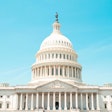
The dozen states still prohibiting legal sports betting are collectively leaving more than $2.19 billion in annual tax revenue on the table, according to new research from Doc's Sports.
Since the Supreme Court struck down the federal sports betting ban in 2018, the industry has transformed from a $6.6 billion market to nearly $149 billion by 2024. This expansion has generated approximately $2.83 billion in state tax revenues last year alone, compared to just $40 million in 2018.

Doc's revenue calculations are based on a national per capita average of $17.15 in sports betting tax revenue across states where wagering is legal. Applied to the populations of the 12 holdout states, this metric reveals potential income.
According to the report, major metropolitan areas in non-legal states represent particularly concentrated revenue opportunities. The three largest cities in each holdout state could collectively contribute over $326 million annually in tax revenue, demonstrating how urban population centers drive sports betting activity.

New York leads all states in sports betting tax collection, generating more than $1 billion in 2024. Illinois and Pennsylvania each contributed $342 million, while Ohio and New Jersey rounded out the top five with $210 million and $181 million respectively. These figures underscore the revenue potential that non-legal states are currently forgoing.
The sports betting market shows no signs of slowing, with Doc's Sports projecting that total state tax revenues could exceed $5 billion annually if all remaining states legalized wagering. This growth trajectory reflects both increasing consumer adoption and the maturation of regulatory frameworks across legal jurisdictions.





































